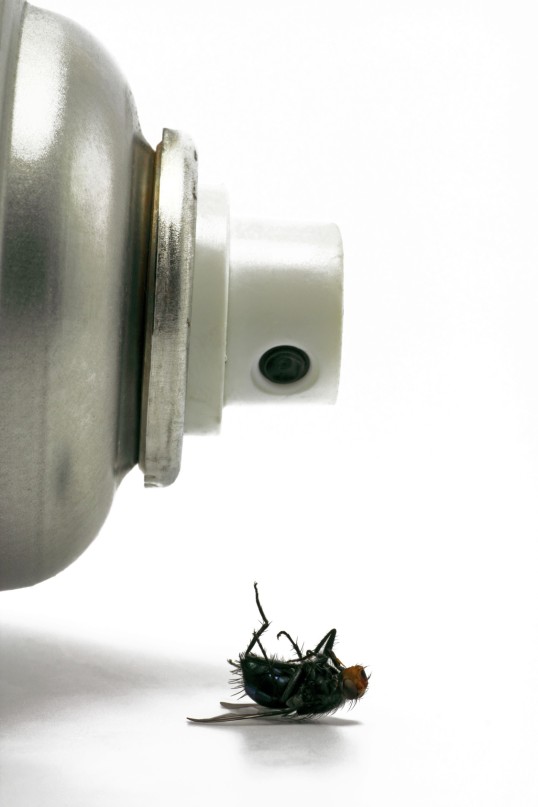- Elektromagnetic Fields
- Indoor workplaces
- Practical Solutions: Ergonomics
- Practical solutions: Hazardous substances
- Practical solutions: Noise
- Practical solutions: Machine safety
- Practical solutions: Personal Protective Equipment
Insecticides

Use of insect spray
Source: Schlierner, fotolia
Although insecticides, i.e. products for insect pest control, are primarily used in agriculture and forestry, they are also used extensively indoors for the following purposes:
- to preserve wood and protect fabric (e.g. permethrin in wool carpets)
- to provide mosquito protection (electric vaporisers and sprays);
- to protect plants against pests
- to treat parasitic skin diseases in humans and animals
- to eliminate pests (e.g. cockroaches, silverfish) by means of decontamination.
The following categories of substance currently play a role in indoor applications:
- Pyrethroids
- Phosphoric esters
- Carbamates.
All insecticides can be emitted into the indoor air even quite some time after they are applied. This is due to a variety of processes such as vaporisation, desorption or attachment to dust. In practice, they can pollute the air for anything from a few days (as in the case of pyrethrum) to several weeks (dichlorvos) and months or longer (deltamethrin, permethrin).
Since many insecticides accumulate in dust, analysing dust deposits can deliver important information about the substances that have been applied indoors and the doses used.
For download

Further information

- Biocidal products and treated goods - Information desk of the German Federal Institute for Risk Assessment
Contact
Hazardous substances: handling, protective measures
Tel: +49 30 13001-3320Fax: +49 30 13001-38001